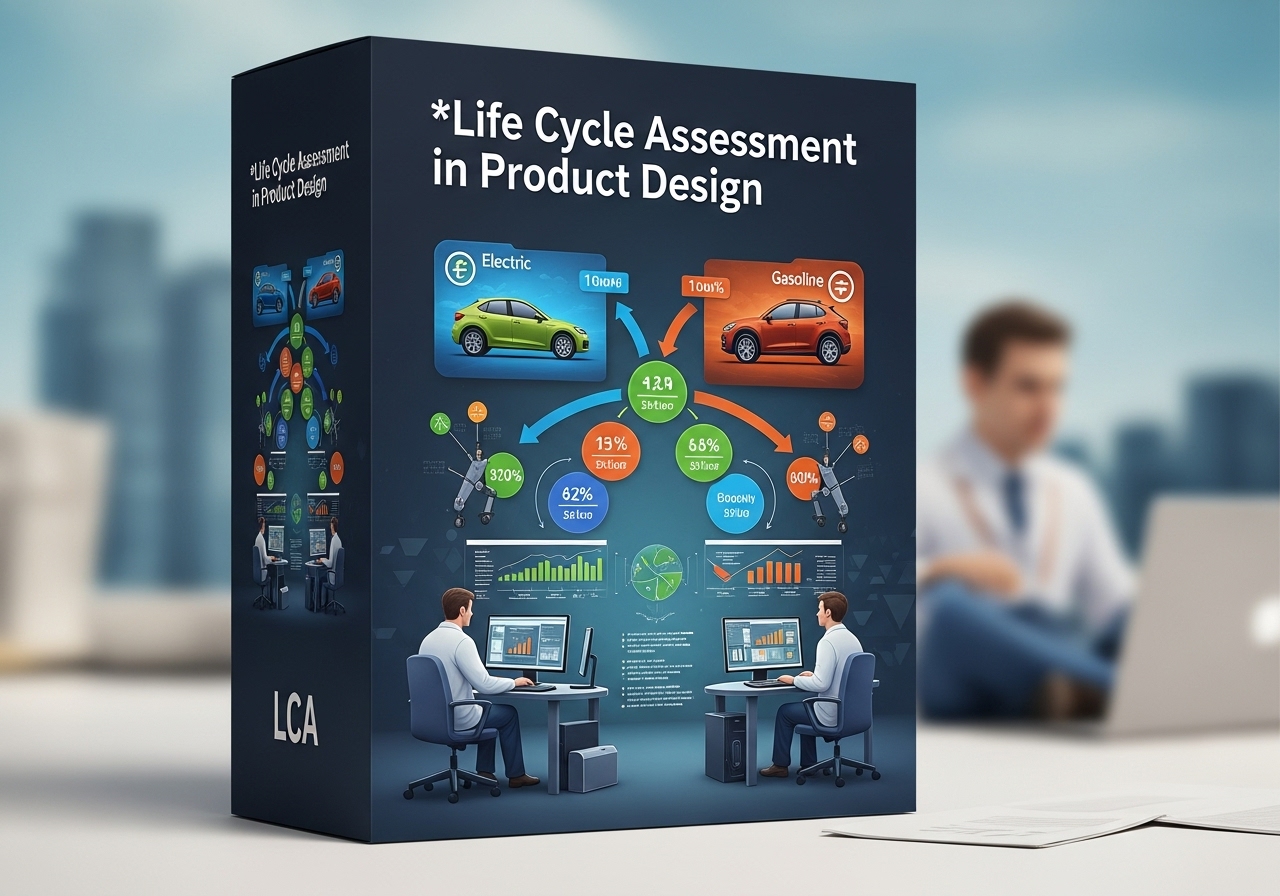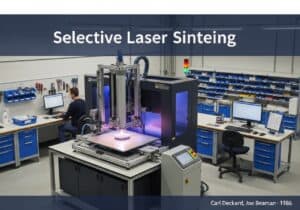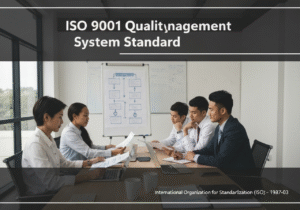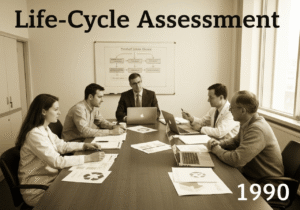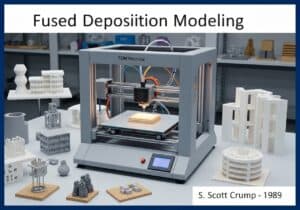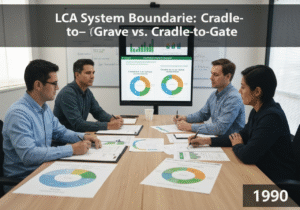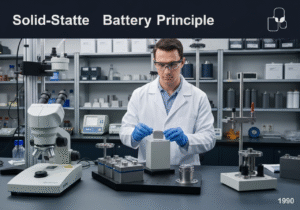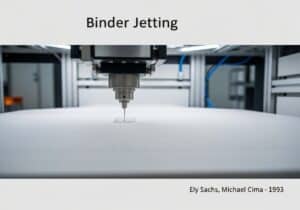As industries and designers struggle with increasing regulatory pressures and consumer demand for sustainability, the integration of LCA into product design processes emerges as a significant opportunity to enhance environmental performance while maintaining competitive advantage across high-volumes sectors such as automotive, electronics, construction, and packaging.
This article provides a framework, main tools, databases, so as 10 precise design-specific areas, for engineers seeking to apply the Life Cycle Assessment in product design. It will cover fundamental principles outlined in ISO 14040/14044 standards, advanced Life Cycle Inventory (LCI) data collection methodologies, and in-depth Life Cycle Impact Assessment (LCIA) methodologies applied to product design.
Key Takeaways

- 4 LCA phases: goal definition, inventory, impact assessment, interpretation.
- Utilize precise data collection methods for accurate LCI modeling.
- Select appropriate LCIA methodologies.
- Analyze LCA results using established metrics.
- Integrate LCA into design processes for enhanced product sustainability.
- Incorporate circular economy principles to address future design challenges.
Principles of Life Cycle Assessment
Life Cycle Assessment (LCA) is a systematic process for evaluating the environmental impacts associated with all stages of a product’s life, from raw material extraction through production, use, and disposal.
This comprehensive approach provides a holistic view of the product’s environmental footprint, enabling designers and engineers to identify areas for improvement. LCA is crucial for sustainable product development, as it quantifies the potential environmental effects in a measurable way.
The ISO 14040 and ISO 14044 standards provide a framework for conducting LCA, ensuring consistency and reliability in assessments. These standards outline the principles and requirements for LCA studies, including defining the goal and scope, conducting inventory analyses, assessing impacts, and interpreting results. Adhering to these standards enhances the credibility of LCA results and facilitates communication among stakeholders.
LCA is divided into four distinct phases: goal and scope definition, inventory analysis, impact assessment, and interpretation detailed hereafter:
1. Goal and Scope Definition
This initial and foundational phase sets the direction for the entire assessment. It involves clearly defining the purpose of the study, the intended application and audience for the results, and whether the findings will be used for comparative assertions disclosed to the public.
Key elements established during this stage include the functional unit, which provides a quantifiable measure of the product’s function and a reference for comparison, and the system boundaries, which determine which life cycle stages and processes are included in the analysis (e.g., cradle-to-gate or cradle-to-grave).
Carefully defining the goal and scope is crucial as it guides all subsequent phases and ensures the consistency and relevance of the final results.

Tip: employ a dual modeling approach for robustness by defining both an attributional and a consequential scope early on. While most LCAs default to an attributional model (what impacts are attributed to the product life cycle), defining a parallel consequential model (what systemic changes result from the product’s existence) provides deeper insights. For products aimed at influencing market dynamics or shaping policy frameworks, it is crucial to present results from multiple viewpoints. By doing so, one can achieve a deeper comprehension of the product’s environmental impact and distinguishes the average footprint of the product from its marginal effects on the larger system.
2. Life Cycle Inventory (LCI)
The second phase is the Life Cycle Inventory (LCI) analysis, which is primarily a data collection phase. It involves identifying and quantifying all relevant environmental inputs and outputs for the product system defined in the first phase. This comprehensive inventory includes the consumption of raw materials, energy, and water, as well as emissions to air, land, and water throughout the product’s life cycle. The collected data is often organized using a flow model to illustrate the inputs and outputs for each process within the system boundaries. This phase is typically the most time-consuming part of an LCA due to the complexity of gathering accurate and comprehensive data from various sources.
Tip: implement a hybrid LCI approach to strategically fill data gaps. Instead of relying solely on process-based data or input-output tables, combine them. Use specific, primary data for key processes that are under your control or have high expected impacts (identified in the goal and scope phase). For less critical or upstream processes where primary data is unavailable, use environmentally extended input-output (EEIO) data. This hybrid method leverages the detail of process data where it matters most while ensuring the completeness of the system boundary, reducing the uncertainty that arises from relying on potentially mismatched proxy data.
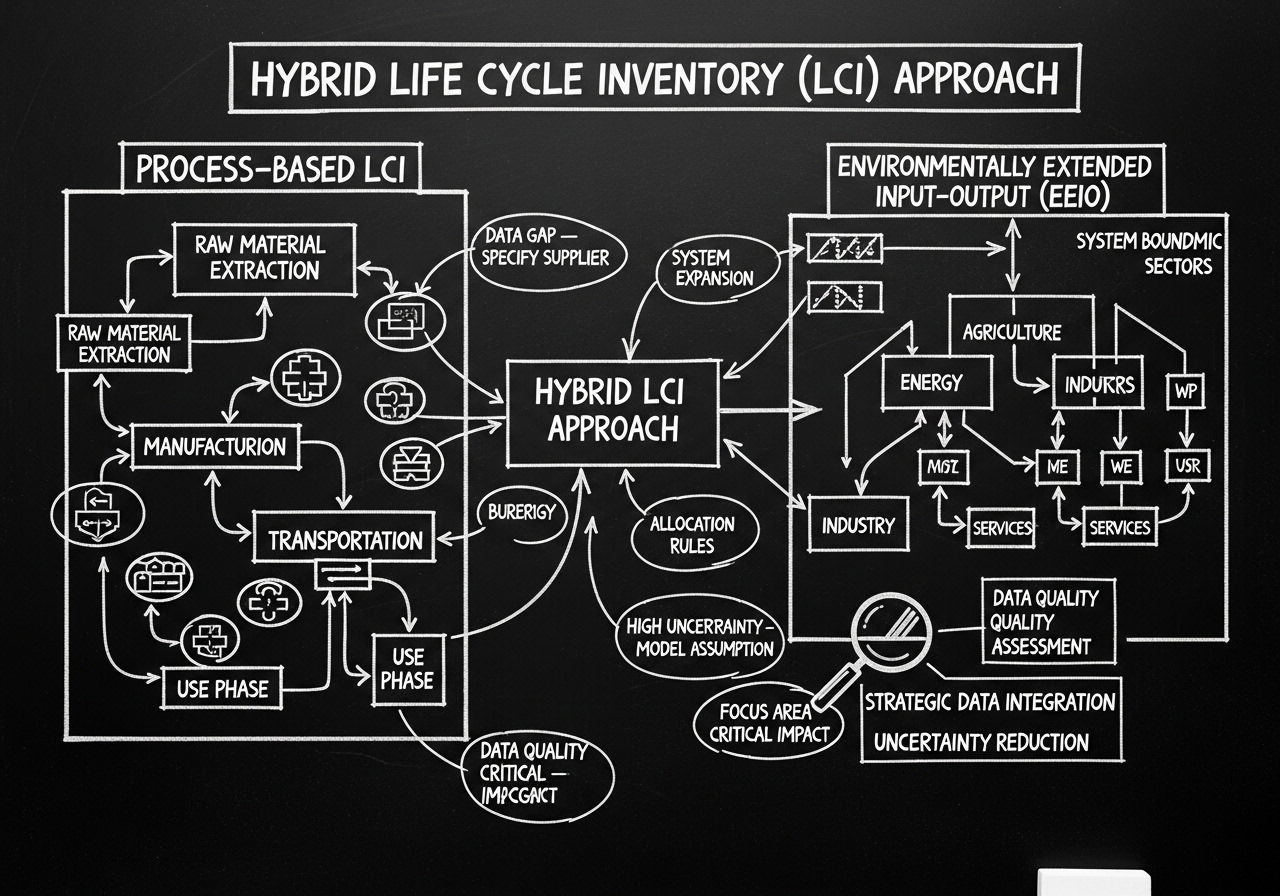
Tip: use stochastic modeling for known data variability. When collecting primary or secondary data, instead of using point values (averages), characterize key parameters with probability distributions (e.g., normal, lognormal, triangular). For example, transport distances, energy consumption, or waste generation rates often vary. By incorporating these distributions, you can run Monte Carlo simulations during the impact assessment phase. This technique propagates the input uncertainties through the model, yielding results as distributions rather than single scores, which provides a more realistic and statistically robust picture of the potential environmental impacts.
3. Life Cycle Impact Assessment (LCIA)
In the Life Cycle Impact Assessment (LCIA) phase, the data collected during the LCI is translated into potential environmental impacts.
This is achieved by first classifying the LCI results into relevant impact categories, such as global warming potential, acidification, and resource depletion. Following classification, a characterization step quantifies the contribution of each input and output to its assigned impact category. For example, different greenhouse gas emissions are converted into a common unit of CO2 equivalents to assess their combined global warming potential. The goal of the LCIA is to evaluate the environmental significance of the flows identified in the inventory phase.
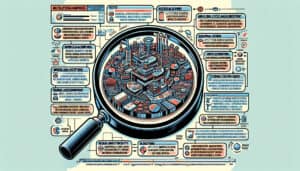
Tip: conduct the assessment using multiple scientifically recognized LCIA methods and compare the outcomes. Do not rely on a single method (e.g., ReCiPe or TRACI) as the choice can significantly influence the results, especially for toxicity-related categories. Select two to three distinct methods that have different modeling assumptions or regional focuses (e.g., one midpoint-oriented like CML and one endpoint-oriented like ReCiPe). Conducting a comparative analysis of results enables the identification of consistent conclusions across various methodologies. This process also reveals any anomalies that may arise from the specific characterization factors associated with individual methods.
Tip:systematically justify the use of normalization and weighting, and always present results both with and without these...
You have read 18% of the article. The rest is for our community. Already a member? Log in
(and also to protect our original content from scraping bots)
Innovation.world community
Login or Register (100% free)
View the rest of this article and all members-only content and tools.
Only real engineers, manufacturers, designers, marketers professionals.
No bot, no hater, no spammer.
